Mastering digital printing and dyeing technology, designer Dang Viet Bao (41 years old) - the first person to be awarded the title of Hue Ao Dai Artisan by Thua Thien-Hue province, has brought the image of the heritage of the Huong River and Ngu Mountain region to many places.
EACH CANVAS IS A WORK OF ART
It must be said that designer Dang Viet Bao is a familiar name in the Vietnamese ao dai design community. Before being awarded the title of artisan in the ao dai field in 2022, he was already famous for continuously introducing unique collections. Or in the role of director, organizer..., he excelled in creating ao dai shows that caused a stir. However, not everyone knows that artisan Viet Bao is also a researcher who prints ao dai fabric with typical images of the tangible and intangible heritage of Hue.
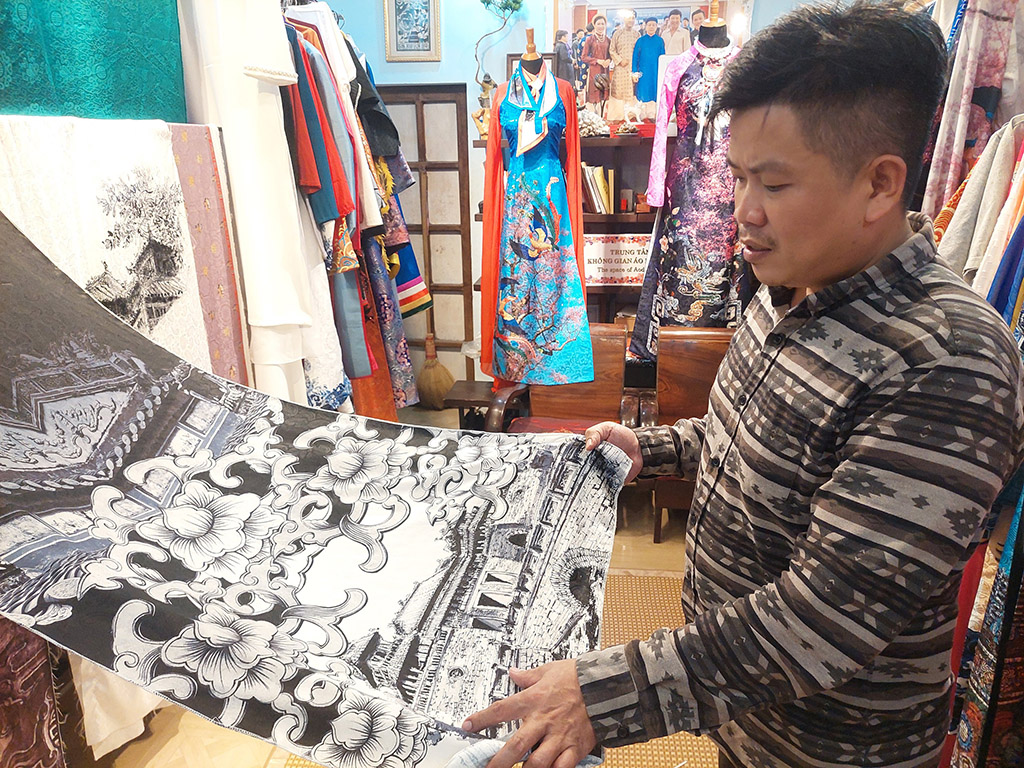
Images of Ngo Mon - Hue Imperial City and Nguyen Dynasty patterns printed on the ao dai by designer Dang Viet Bao
"Hue is the cradle of the ao dai with identities such as: purple ao dai, meticulous tailors, beautiful, cheap... But the sad reality is that tailors compete with each other, "devaluing" the sewing price, so the value of the ao dai cannot be raised. With the thought of how to make visitors to Hue not only sew ao dai but also buy fabrics that are only available in Hue, I found a way to put images of landscapes, works, architecture, patterns, motifs... of the Nguyen Dynasty on the ao dai", designer Viet Bao shared. Through the application of digital heat transfer printing technology, in 2020, he had his first product with the image of royal patterns at the Hue Imperial City.
The Van Hien Kinh Ky collection with Ao Dai printed with decorative motifs of Nguyen Dynasty fine arts received positive feedback from experts. Mr. Bao continued to collaborate with photographers to capture more images of patterns, such as Tam Son Thuy Ba waves, Bat Buu, Long Phung nest, Phuc - Loc - Tho characters... to print on fabric. "To have a fabric printed with Nguyen Dynasty patterns, it has to go through many stages. When I have an idea, the first thing I do is go to ancient works in the royal palace, mausoleum, pagoda... to find inspiration. Next, I go with photographers to take pictures and bring them back to draft, process graphics... The printing stage only requires putting the image on medical paper, pressing the medical paper onto soft synthetic fabric, using a heat transfer printing device to complete", he shared.
On the Ao Dai printed by Mr. Bao, there are also symbolic images of Hue, such as: Truong Tien Bridge, Ngo Mon - Hue Imperial City, Thien Mu Pagoda, Phu Van Lau, Cuu Dinh... lightly dotted through sketches. These are copyrighted paintings created by artists, combined with Nguyen Dynasty motifs to print on fabric.
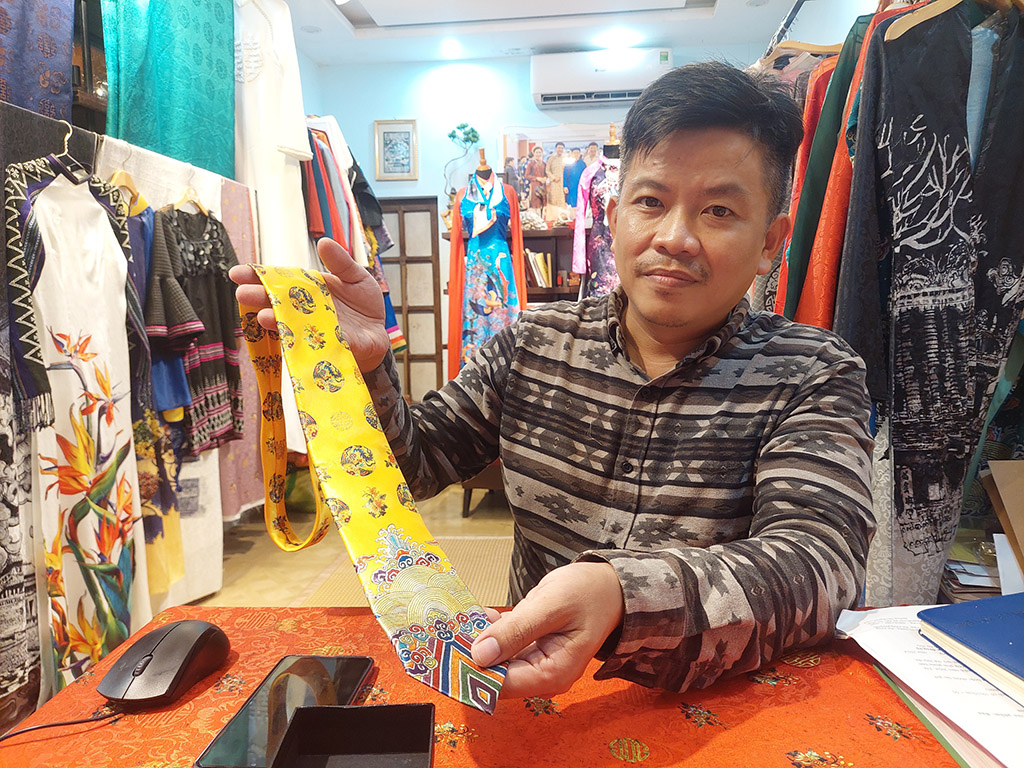
Mr. Bao designs many souvenir products with patterns inspired by Nguyen Dynasty fine arts.
USING HERITAGE TO SPREAD HERITAGE VALUES
Designer Dang Viet Bao said that when it comes to dyeing and printing Ao Dai fabric, he also encountered unpredictable risks. Once, when he transferred a design to a facility in the South for printing, an employee unfortunately stole the design and smuggled it out. After a while, he accidentally discovered that the design was printed on fabric and sold on the market. With his intelligence stolen and facing competition right in Hue, he was determined to invest in digital heat transfer printing equipment to both maintain the copyright of the printed design and freely create Ao Dai works associated with the heritage that he had long cherished.
With a modern printing line, in the 2022 Tet season, designer Viet Bao introduced to the public the collection of Tet paintings on Vietnamese ao dai with 30 designs of ao dai for men, women and children. The designs were inspired by Sinh village paintings - a unique folk painting form of Hue. Traditional paintings with the image of a circle of 12 zodiac animals, the image of the eight-tone music of girls holding musical instruments, were skillfully depicted by him to honor Hue's elegant music (recognized by UNESCO as an intangible cultural heritage in 2003). Also in this collection, he used decorative motifs from Hang Trong and Dong Ho paintings to make the spring ao dai come alive without being flashy. Recently, at the 2024 Hue Ao Dai Festival, he continued to create a new collection Phuong Vu Ngo Dong with inspiration from the parasol flower in the Imperial City.
Not only did Mr. Bao incorporate the cultural heritage of the Imperial City of Hue into the traditional ao dai, but when he had the idea of promoting the heritage value of any land or locality, he also diligently researched to have a unique design. Showing the ao dai with the sleeves made from brocade of ethnic minorities in the mountainous region to Thanh Nien reporter, designer Viet Bao said that this was his way of honoring the value of zèng. "Zèng is a hand-woven fabric, a national intangible cultural heritage of the Ta Oi people residing in HA Luoi, Thua Thien-Hue...", he said.
With a high sense of aesthetics and mastery of printing technology, Mr. Bao shared that just by giving a topic, he can "magically" transform images and heritage values from all over the country such as Hoi An ancient town, My Son Sanctuary, Thang Long Imperial Citadel... into artistic ao dai. "In August 2024, the knowledge of sewing and wearing Hue ao dai was included in the list of national intangible cultural heritage. With the advantage of being known by many people, I always try to put images and materials on ao dai that can contribute to promoting other heritages. That is also the joy of an ao dai designer like me...", he confided. (to be continued)
Source: https://thanhnien.vn/nhat-nghe-tinh-quang-ba-di-san-tren-ta-ao-dai-185241215195704837.htm


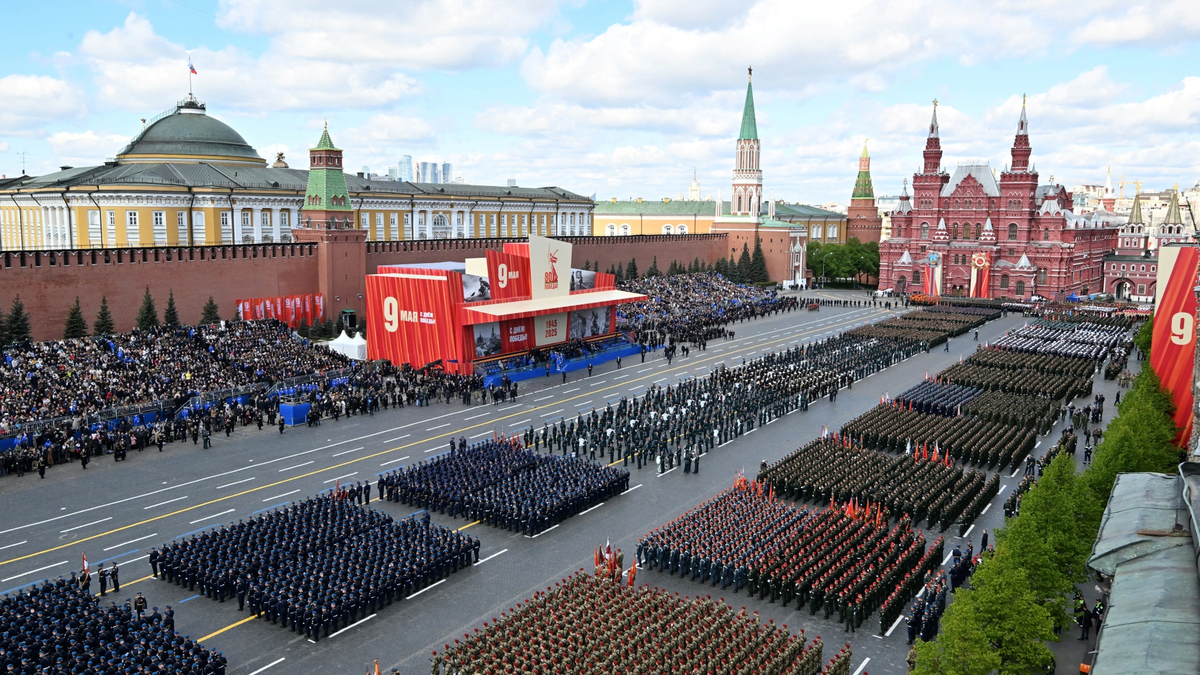
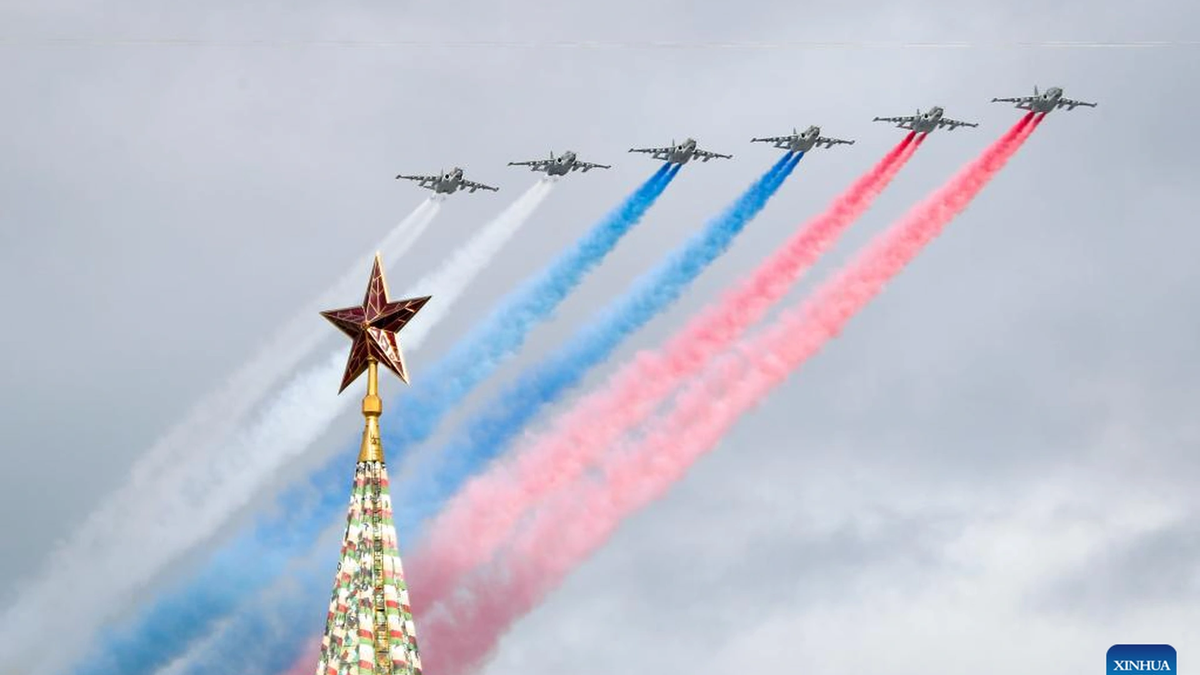
![[Photo] General Secretary To Lam and international leaders attend the parade celebrating the 80th anniversary of the victory over fascism in Russia](https://vphoto.vietnam.vn/thumb/1200x675/vietnam/resource/IMAGE/2025/5/9/4ec77ed7629a45c79d6e8aa952f20dd3)
![[Photo] Prime Minister Pham Minh Chinh chairs a special Government meeting on the arrangement of administrative units at all levels.](https://vphoto.vietnam.vn/thumb/1200x675/vietnam/resource/IMAGE/2025/5/9/6a22e6a997424870abfb39817bb9bb6c)
![[Photo] Russian military power on display at parade celebrating 80 years of victory over fascism](https://vphoto.vietnam.vn/thumb/1200x675/vietnam/resource/IMAGE/2025/5/9/ce054c3a71b74b1da3be310973aebcfd)
![[Photo] Magical moment of double five-colored clouds on Ba Den mountain on the day of the Buddha's relic procession](https://vphoto.vietnam.vn/thumb/1200x675/vietnam/resource/IMAGE/2025/5/9/7a710556965c413397f9e38ac9708d2f)
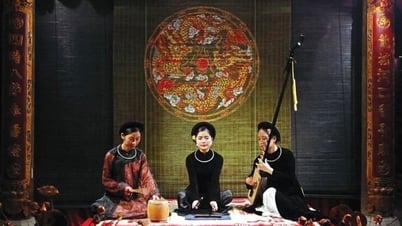

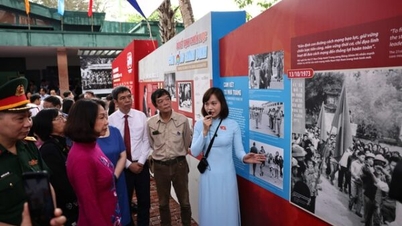




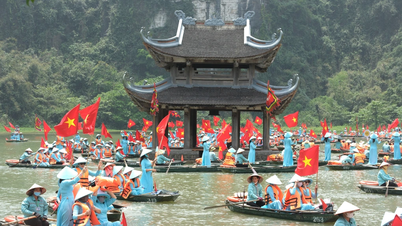

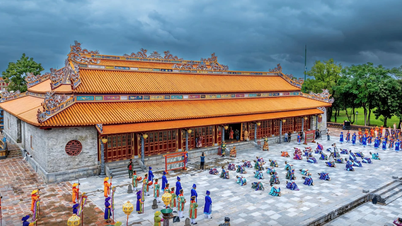
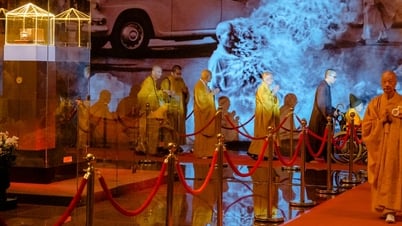
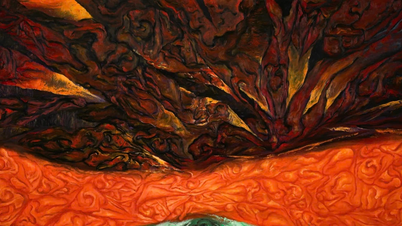

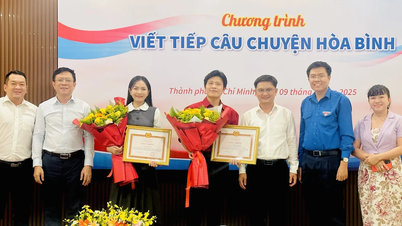
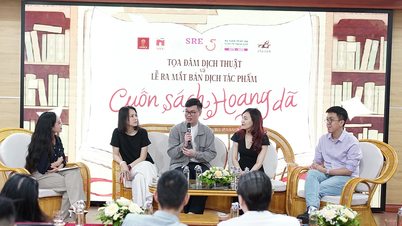
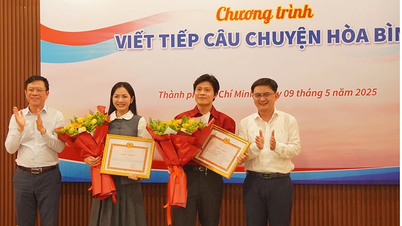




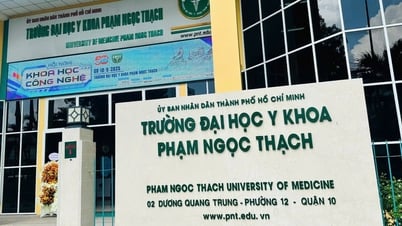


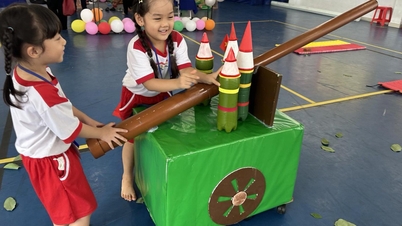


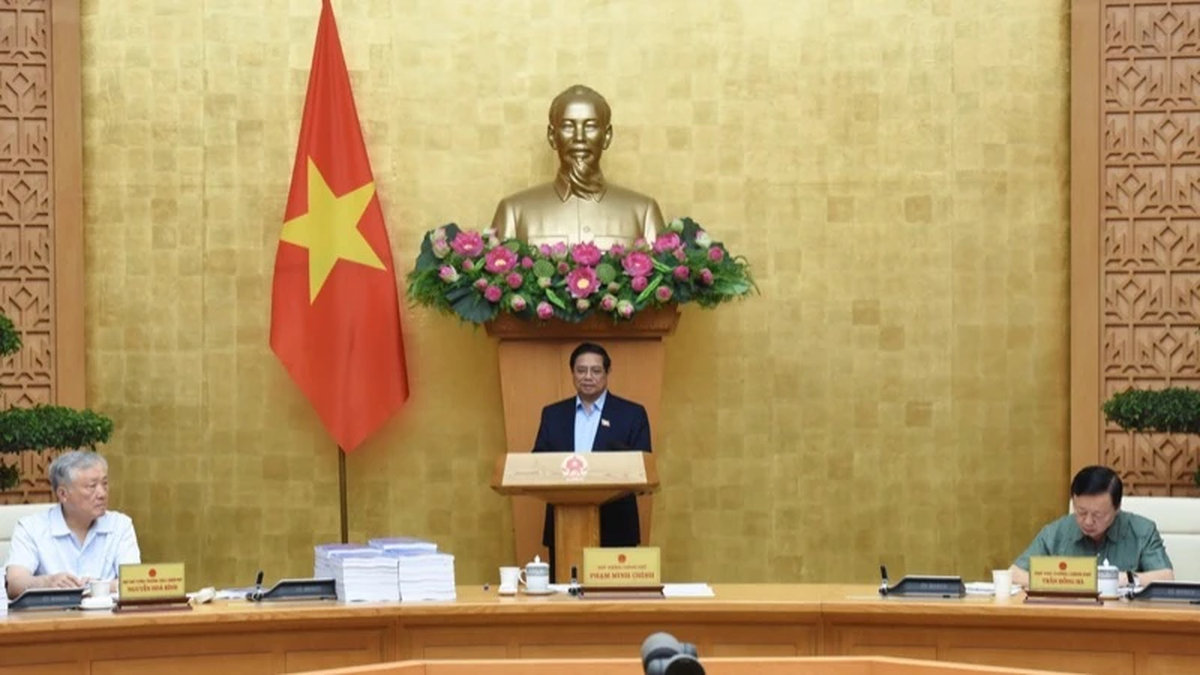
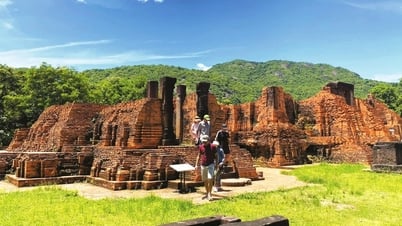

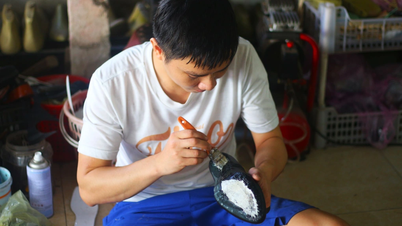
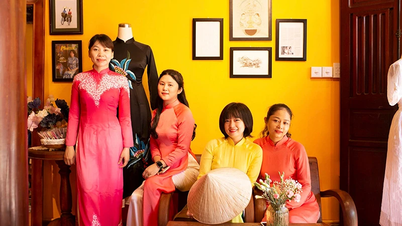

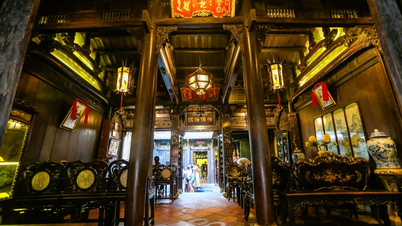
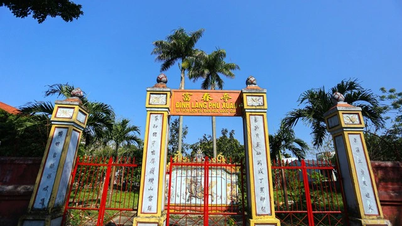
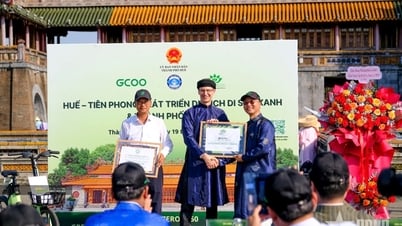





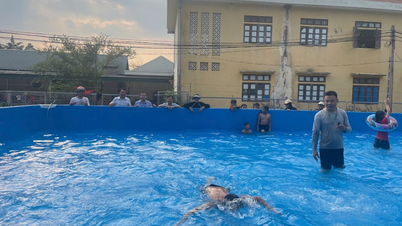

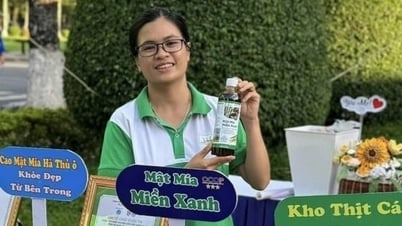










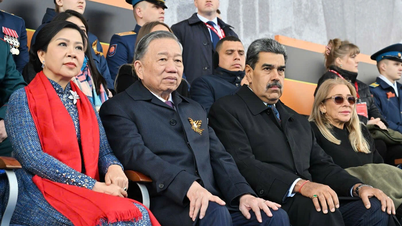
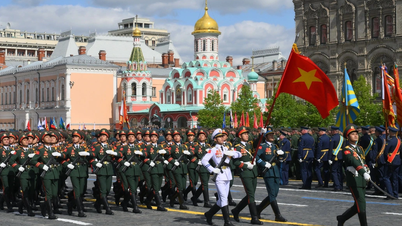

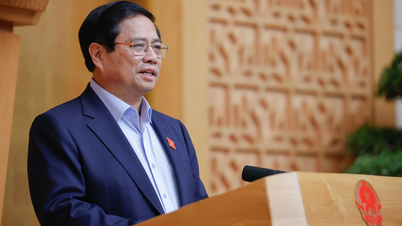
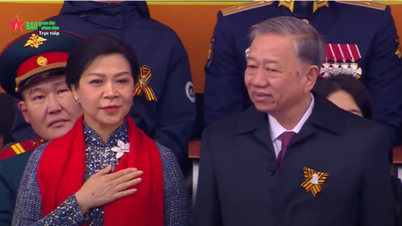






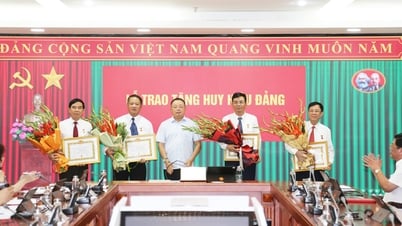




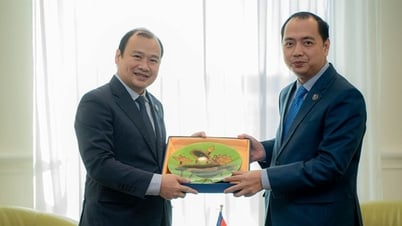
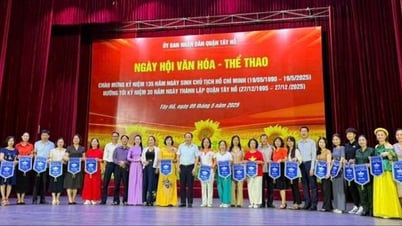

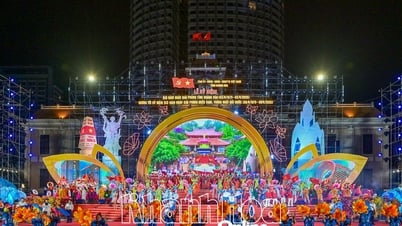

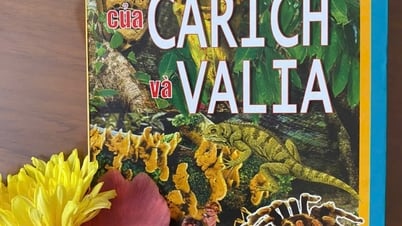
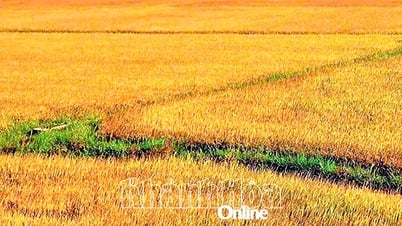
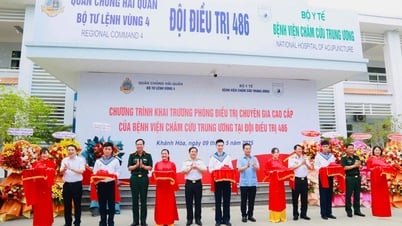


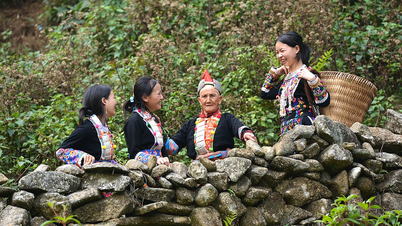








Comment (0)